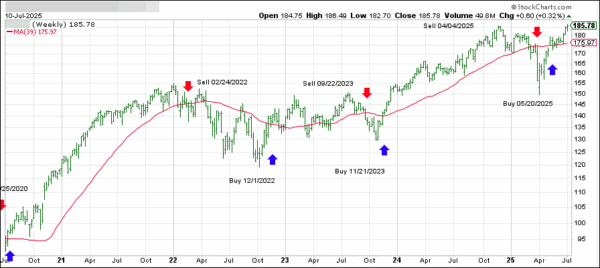ETF Tracker StatSheet
You can view the latest version here.
TARIFF SHOCK ROCKS MARKETS, BUT SILVER AND BITCOIN SHINE

- Moving the market
Markets stumbled out of the gate today, led by the Dow, after Trump announced a surprise 35% tariff on Canadian goods—blaming fentanyl as the reason—and warned of even steeper duties if Canada retaliates. That move reignited tariff tensions and quickly erased yesterday’s recovery.
Trump didn’t stop there. He floated the idea of raising blanket tariffs on all remaining countries to 15–20%, up from the 10% level traders had grown used to. Still hanging in the air: his next move on the European Union.
Meanwhile, U.S. macro data showed a slight uptick, but it wasn’t enough to offset the renewed trade uncertainty. All major indexes ended the day lower.
Interestingly, the “Magnificent 7” tech giants bucked the trend, gaining 1% on the week—even as the other 493 S&P stocks lost about 1%. That divergence came despite a short squeeze lifting some of the most heavily bet-against names.
Bond yields climbed, but that didn’t stop Bitcoin from blasting through its range to hit a new all-time high above $118K, fueled by strong ETF inflows and rising liquidity—something I’ve been flagging for a while.
The dollar had its best week since February, though it’s still hovering near three-year lows. Gold stayed strong, rising for the third straight day, and logging two weeks of gains, supported by its 50-day moving average.
But the real stars of the commodity space were copper and silver. Copper surged to a record high after Trump’s earlier 50% tariff announcement, and silver jumped 3.8% today—breaking above $38 for the first time since 2011.
So, is this the breakout moment traders have been waiting for?
Read More





